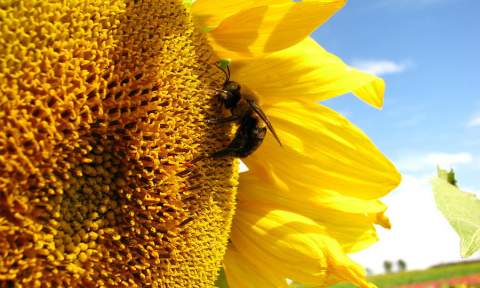
Native Bees Foraging in Fields Are Exposed to Neonicotinoid Insecticides and Other Pesticides
According to the first-ever study of pesticide residues on field-caught bees, native bees are exposed to neonicotinoid insecticides and other pesticides. This report was conducted by the U.S. Geological Survey and published in the journal Science of the Total Environment.
This research focused on native bees, because there is limited information on their exposure to pesticides. In fact, little is known about how toxic these pesticides are to native bee species at the levels detected in the environment. This study did not look at pesticide exposure to honey bees.
“We found that the presence and proximity of nearby agricultural fields was an important factor resulting in the exposure of native bees to pesticides,” said USGS scientist Michelle Hladik, the report’s lead author. “Pesticides were detected in the bees caught in grasslands with no known direct pesticide applications.”
Although conservation efforts have been shown by other investigators to benefit pollinators, this study raises questions about the potential for unintended pesticide exposures where various land uses overlap or are in proximity to one another.
The research consisted of collecting native bees from cultivated agricultural fields and grasslands in northeastern Colorado, then processing the composite bee samples to test for 122 different pesticides, as well as 14 chemicals formed by the breakdown of pesticides. Scientists tested for the presence of pesticides both in and on the bees.
The most common pesticide detected was the neonicotinoid insecticide thiamethoxam, which was found in 46 percent of the composite bee samples. Thiamethoxam is used as a seed coating on a variety of different crops. Pesticides were not found in all bee samples, with 15 of the 54 total samples testing negative for the 122 chemicals examined.
